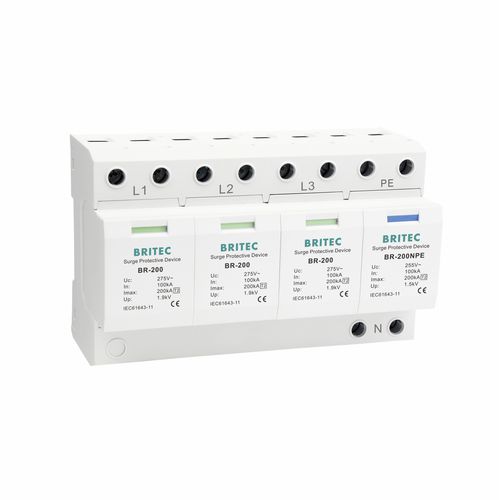1) Big discharger current capacity, low residual voltage, quick response
2) IP20, UL94 V0
3) Lowe leakage current and rate of change
4) Class II / Type 2 surge protective devices.
5) Heat isolation technique, no fire disaster
6) The core parts are metal oxide varistor components with high discharge capacity.
7) Apply special shock fuse pieces, with high reliability
8) Standard compliance: IEC61643-11, EN61643-11
9) With power indicator to display working condition
10) Protecting low voltage devices from surge for TN-S (or TT 3+1 mode as custom-made) power supply systems.
11) Temperature control protective circuit, built-in heat protection, automatic release unit
12) Mount on the 35mm DIN rail.
13) 3+1 protection model(L-N, N-PE), suitable for the poor power grid area
14) Nominal Discharge Current: 100kA
15) Max. Discharge Current: 200kA
16) Exquisite process, can work under the hostile environment for a long time, like acid, alkali, dust, salt fog, wet, etc.
Application:
1) Three phase power SPD is suitable for system power protection, such as switching room, power distribution cabinet, switch cabinet, AC distribution board, etc.
2) For using in the lightning protection zones concept at boundary 1-2.
3) Distribution box with outdoor input in the building and each floor
4) AC power line of house, bank, and telecom tower and so on.
5) AC power surge protective device is used in AC power supply system (50/60Hz) and low-voltage control system to protect from lightning striker and transient over-voltage.
6) Automation machine room, power supply panel of converting station main control room


